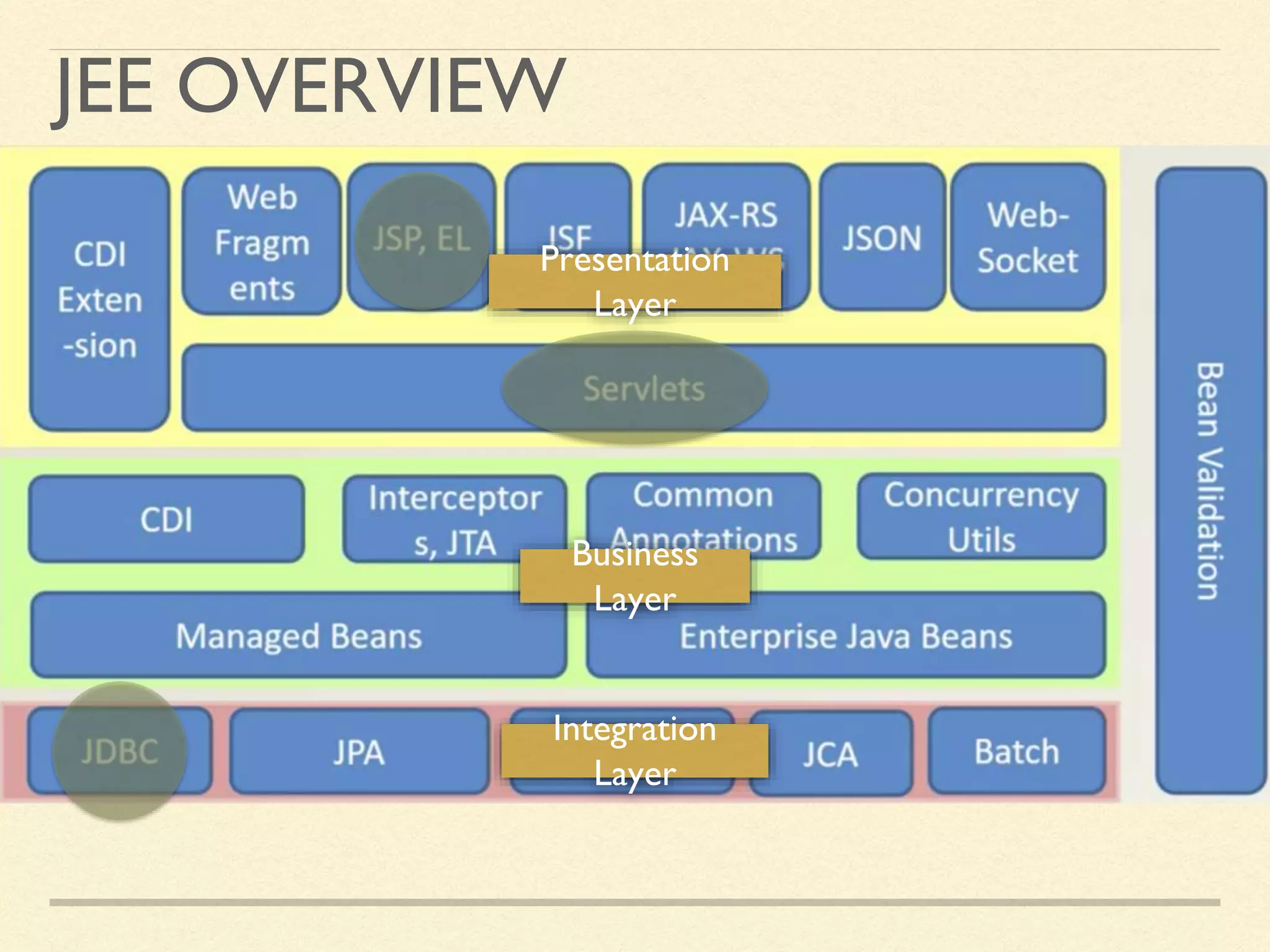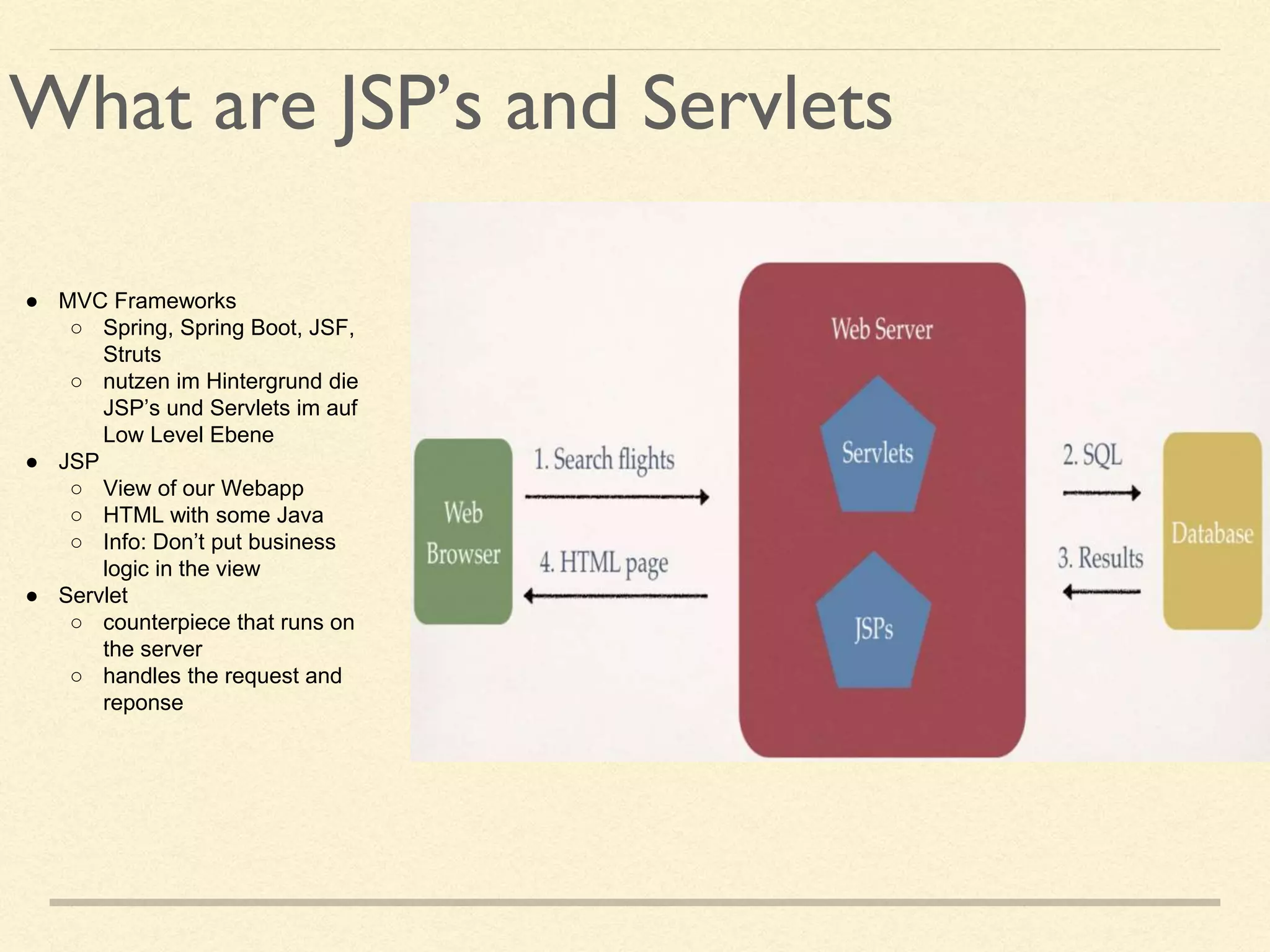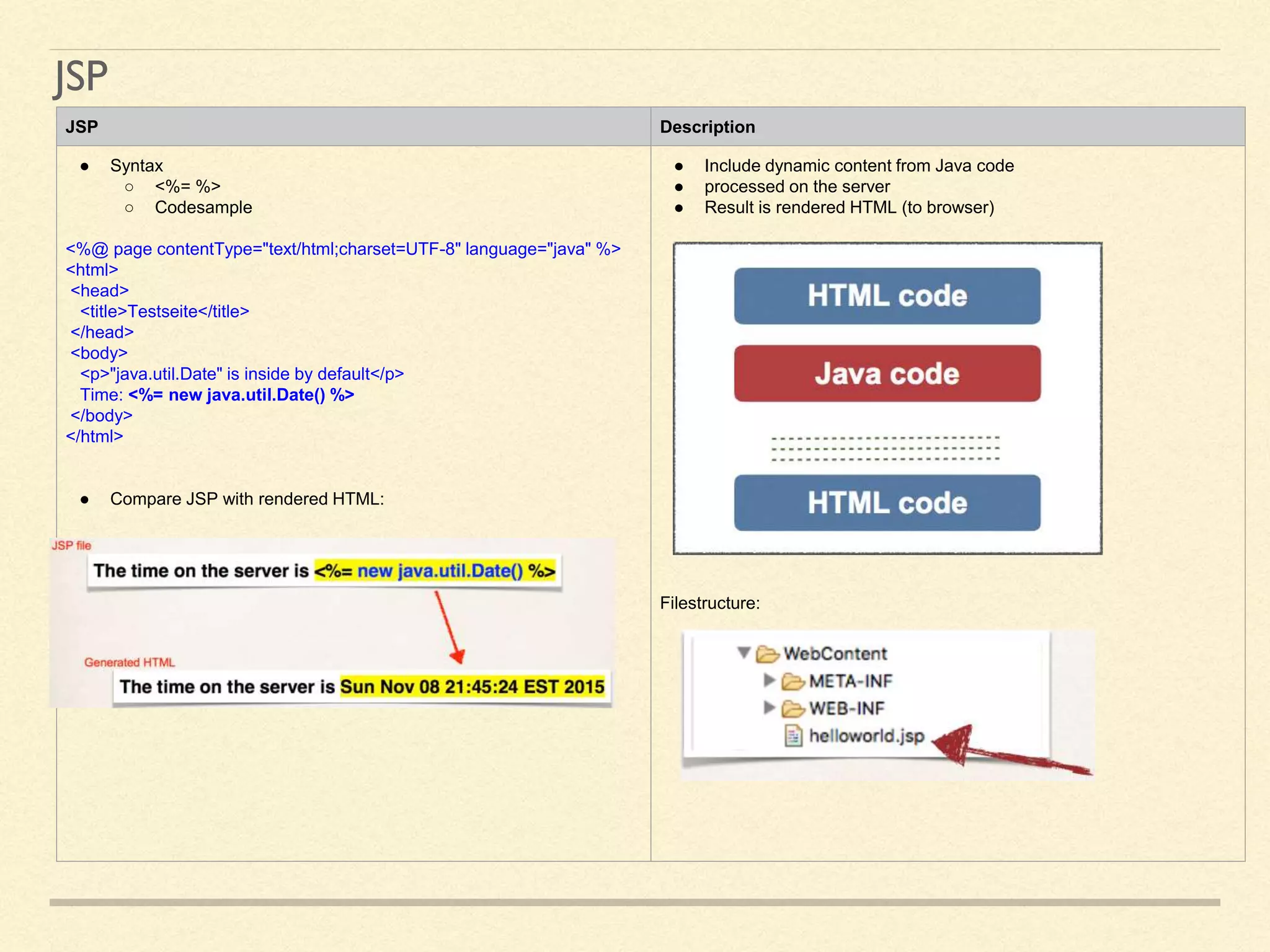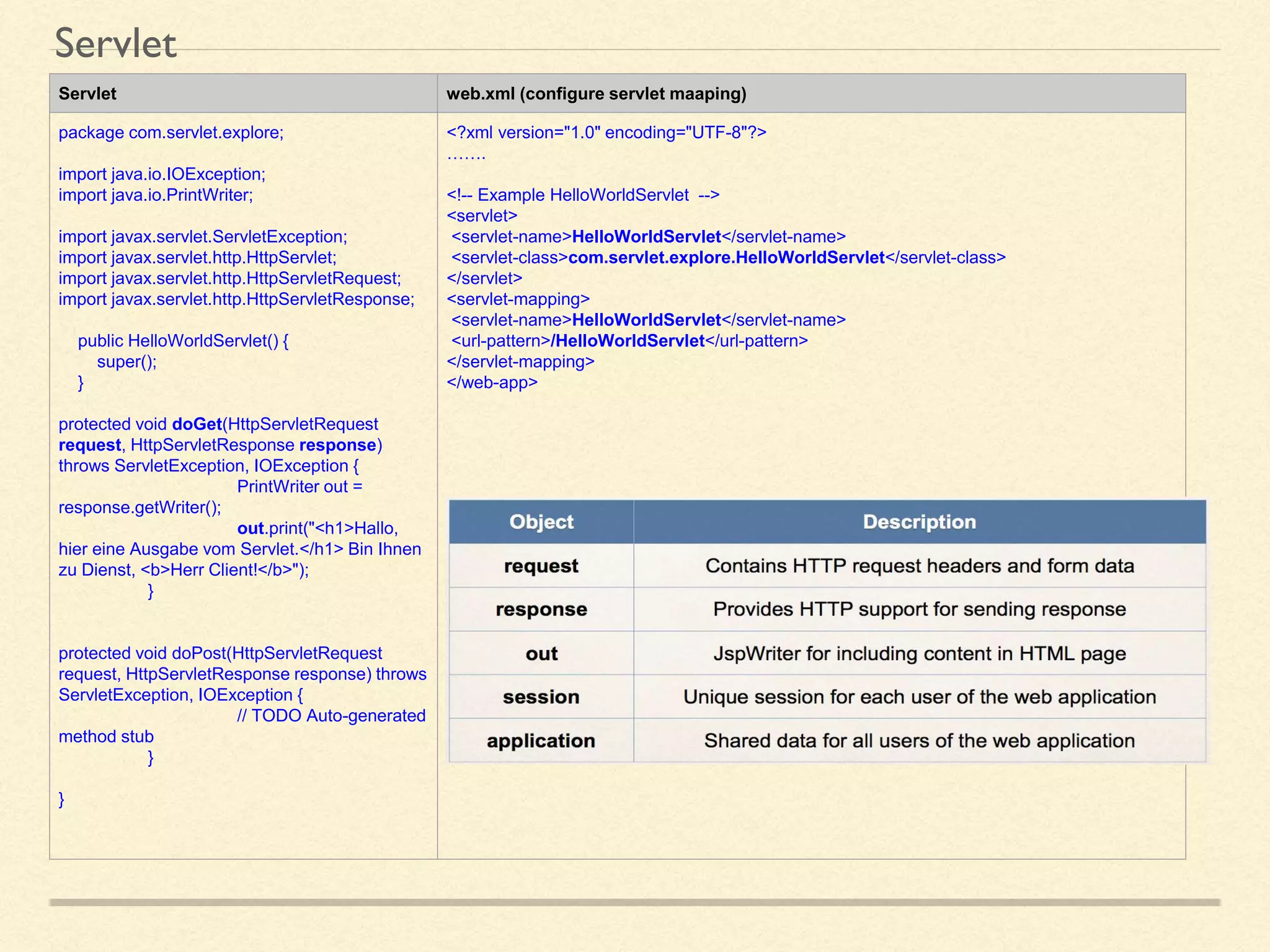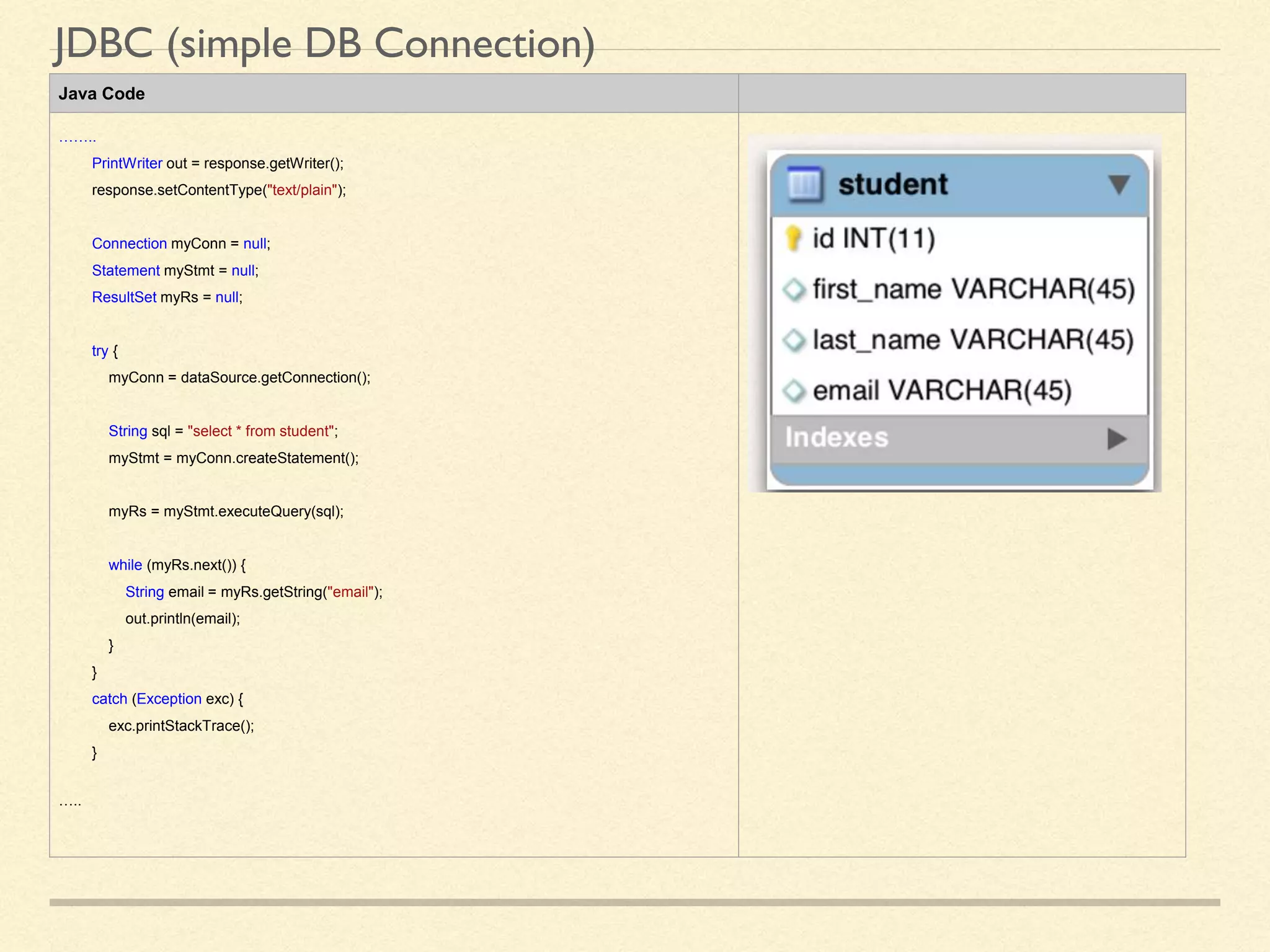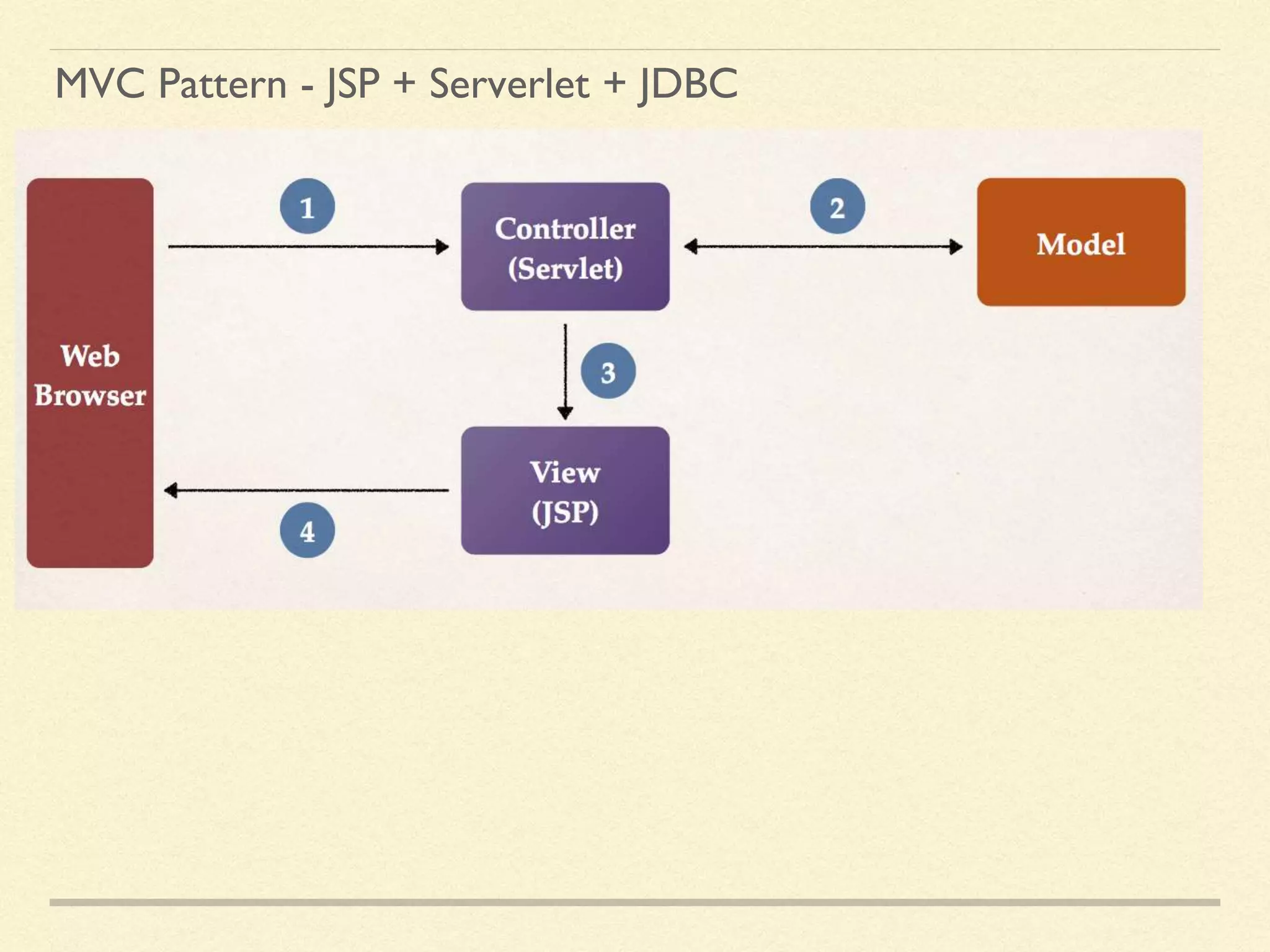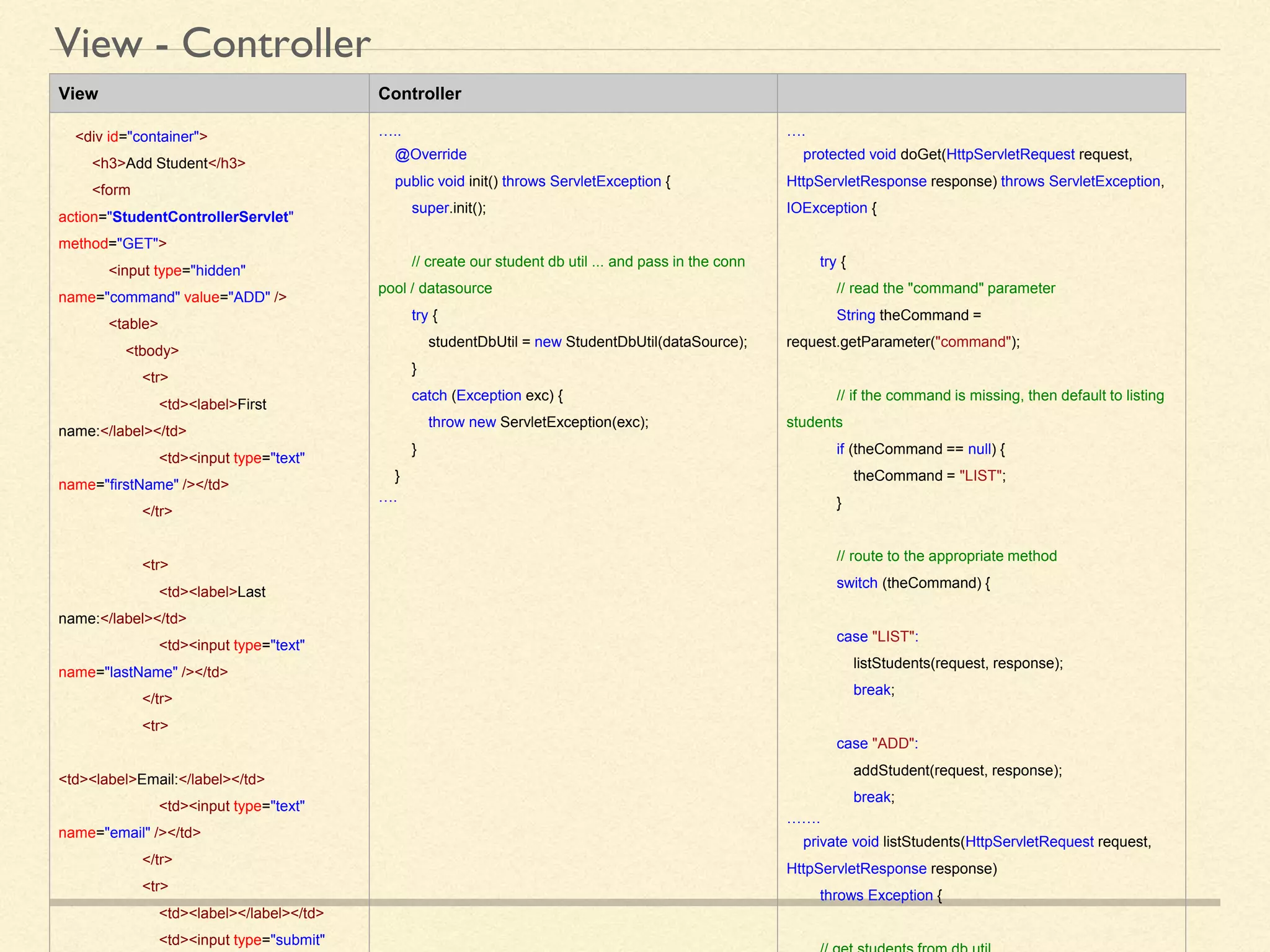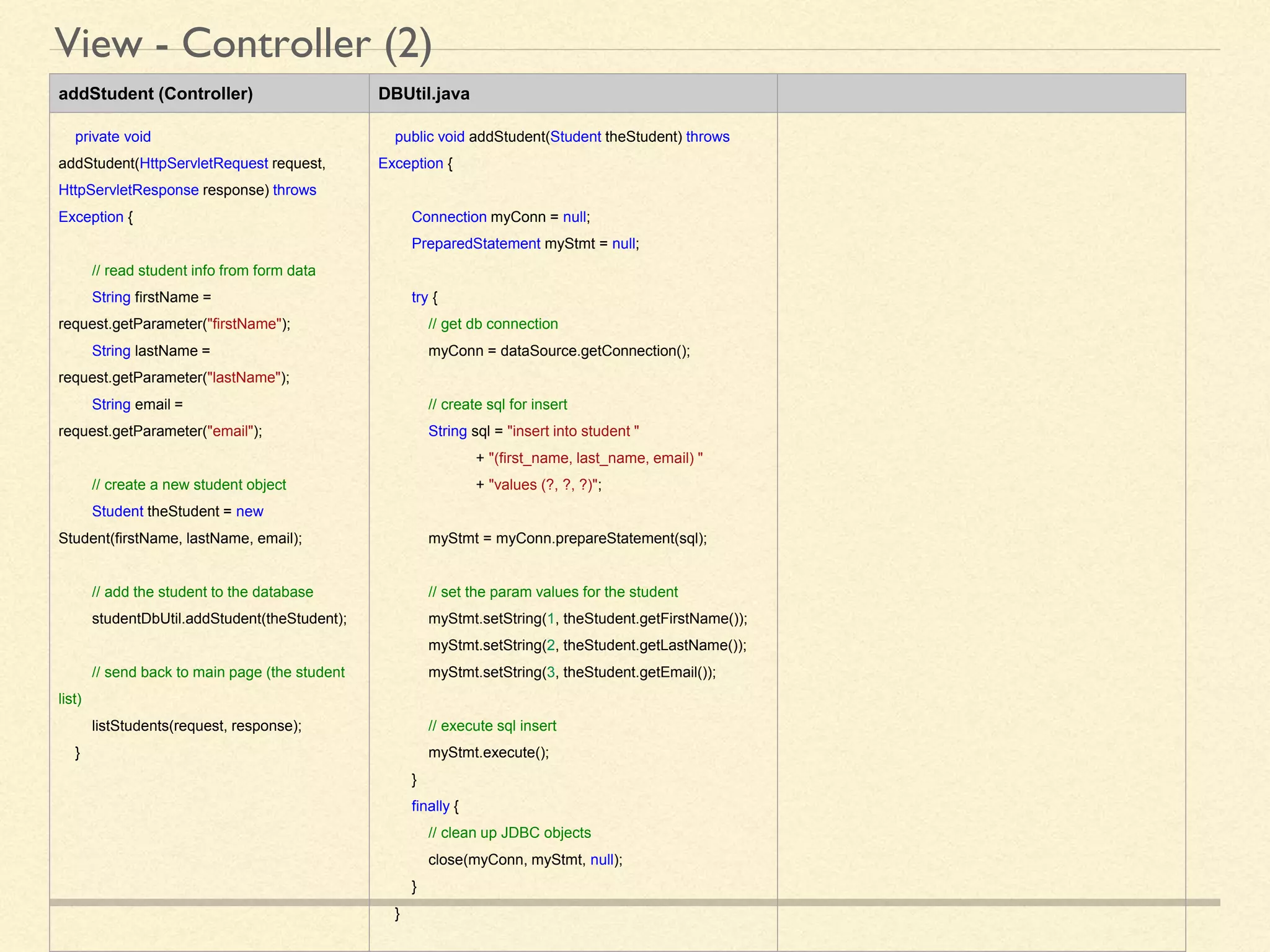The document provides an overview of Java, including its applications in web and mobile development, as well as its object-oriented programming principles such as encapsulation, inheritance, abstraction, and polymorphism. It discusses the Java SE, JRE, and JDK, and highlights popular IDEs and debugging tools. Additionally, it covers how Java is utilized in real-world applications like gaming, e-commerce, and various industries, along with examples of coding practices and the MVC pattern in web applications.
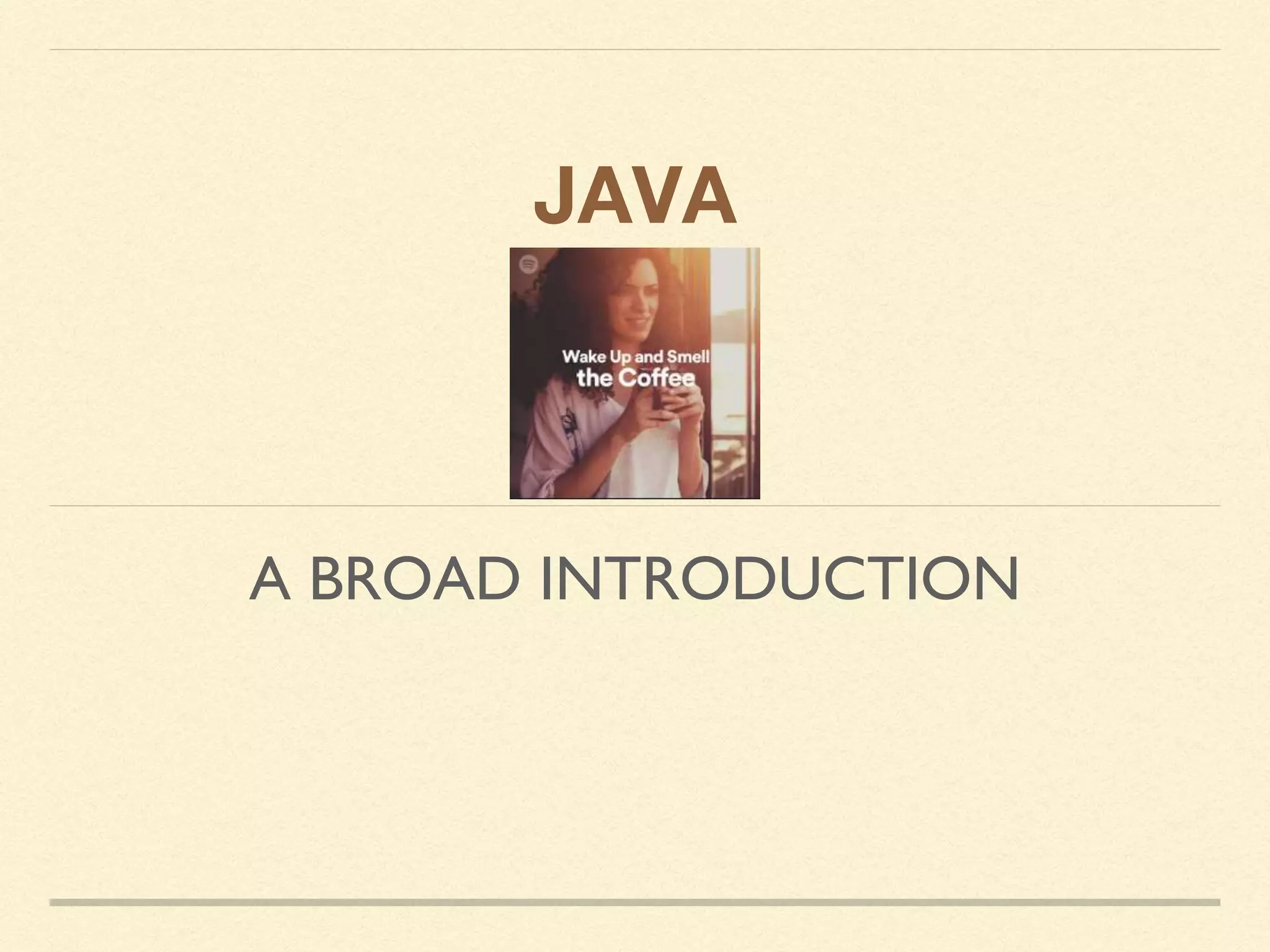
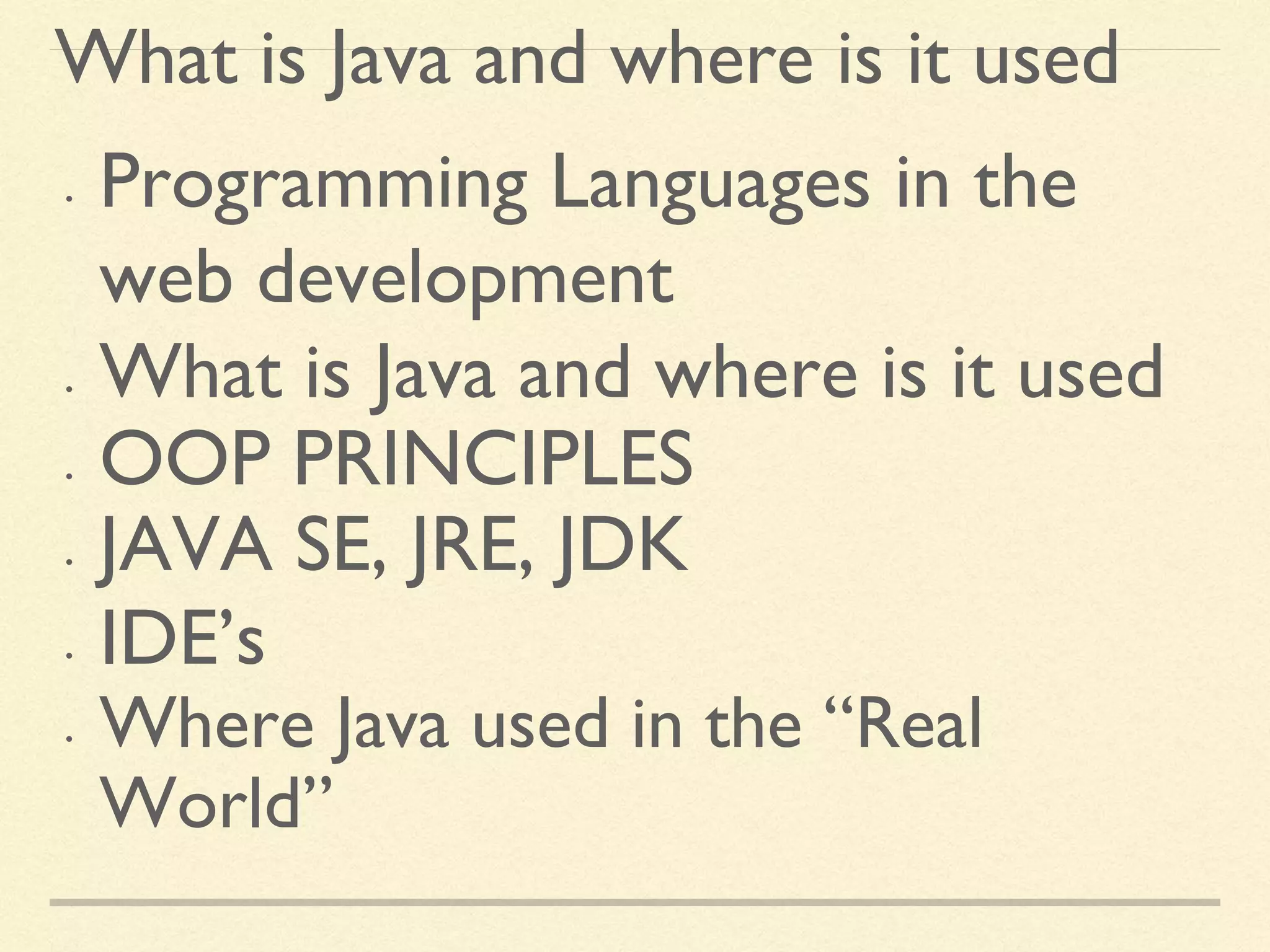
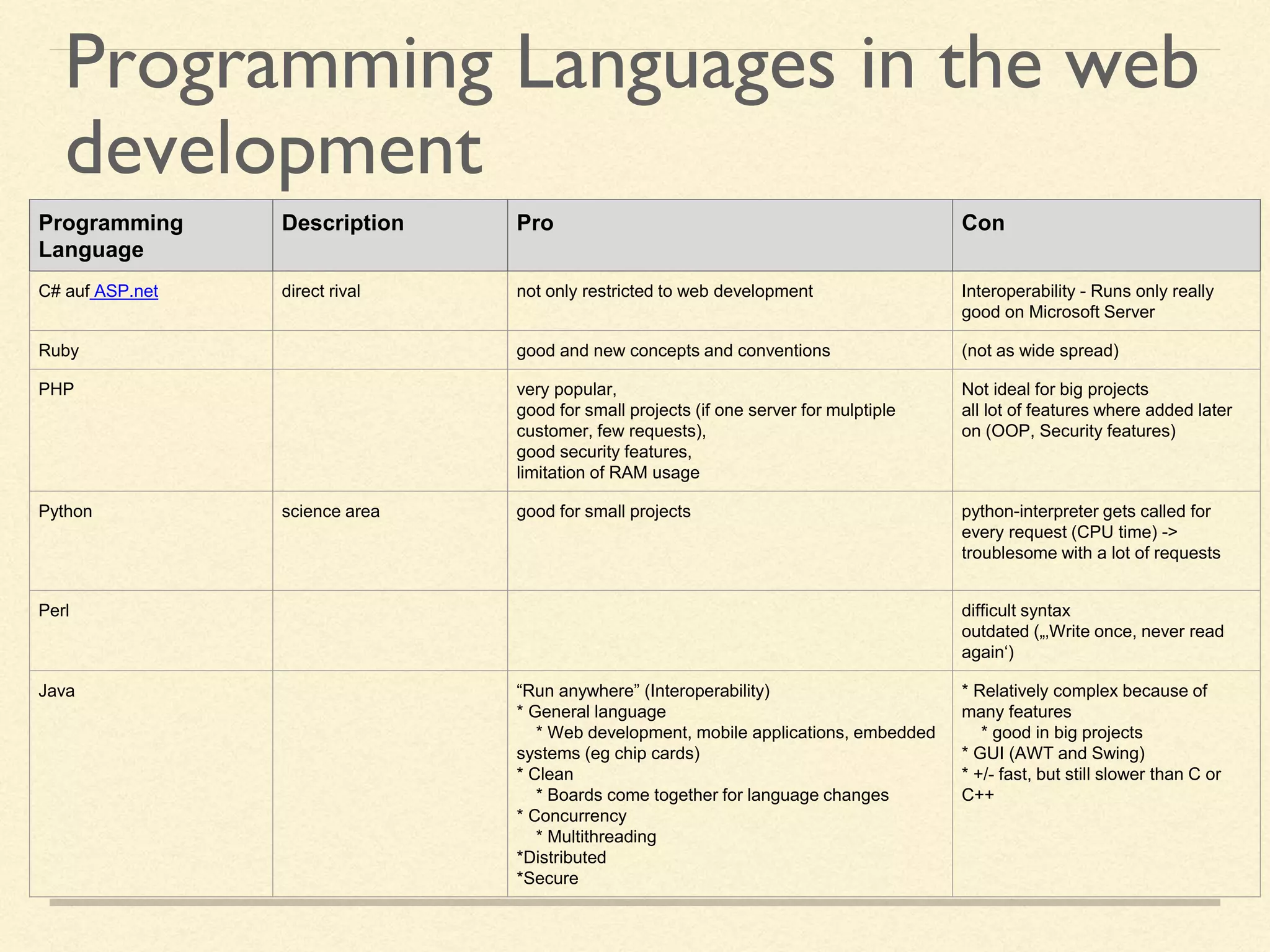
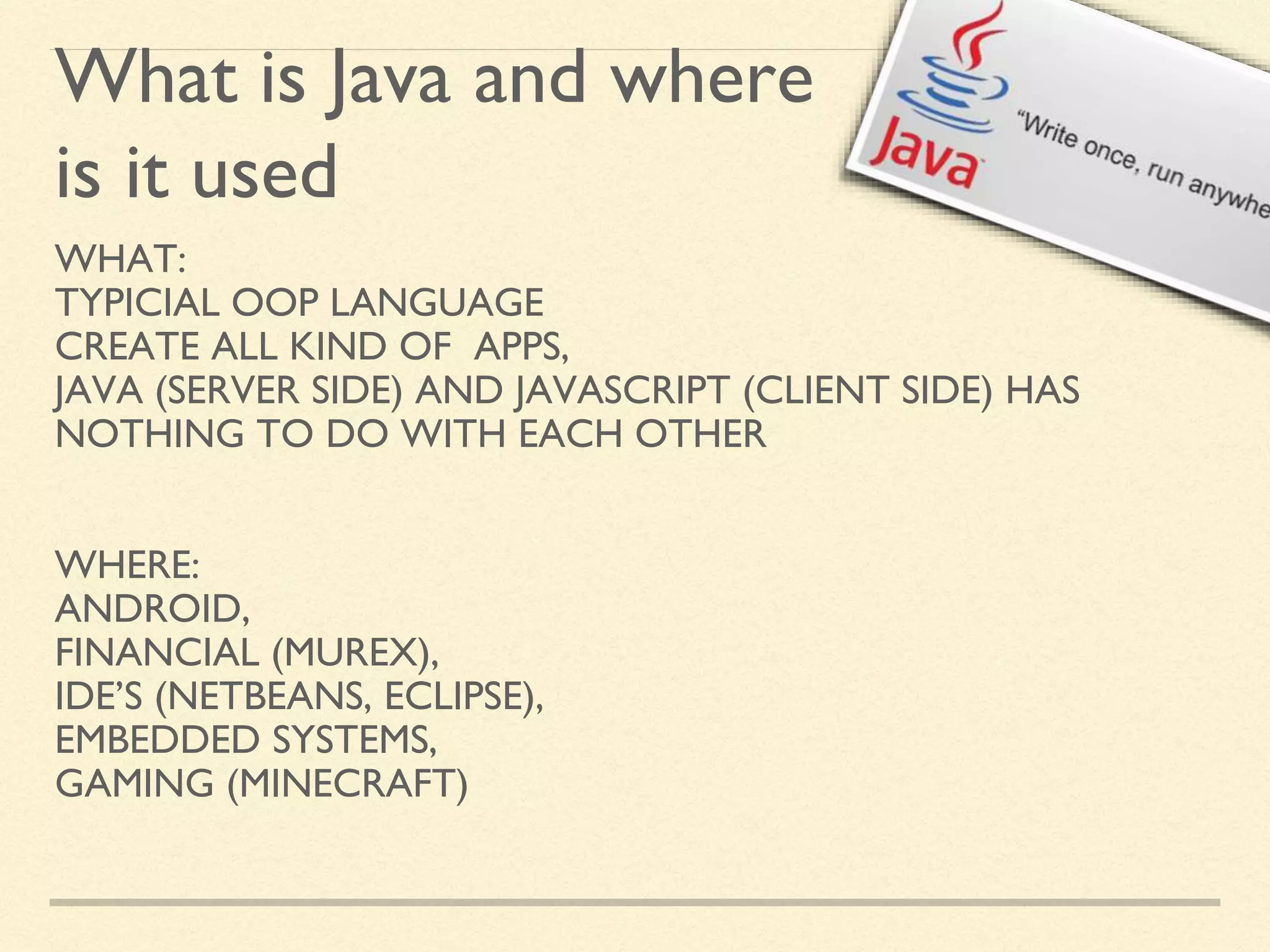
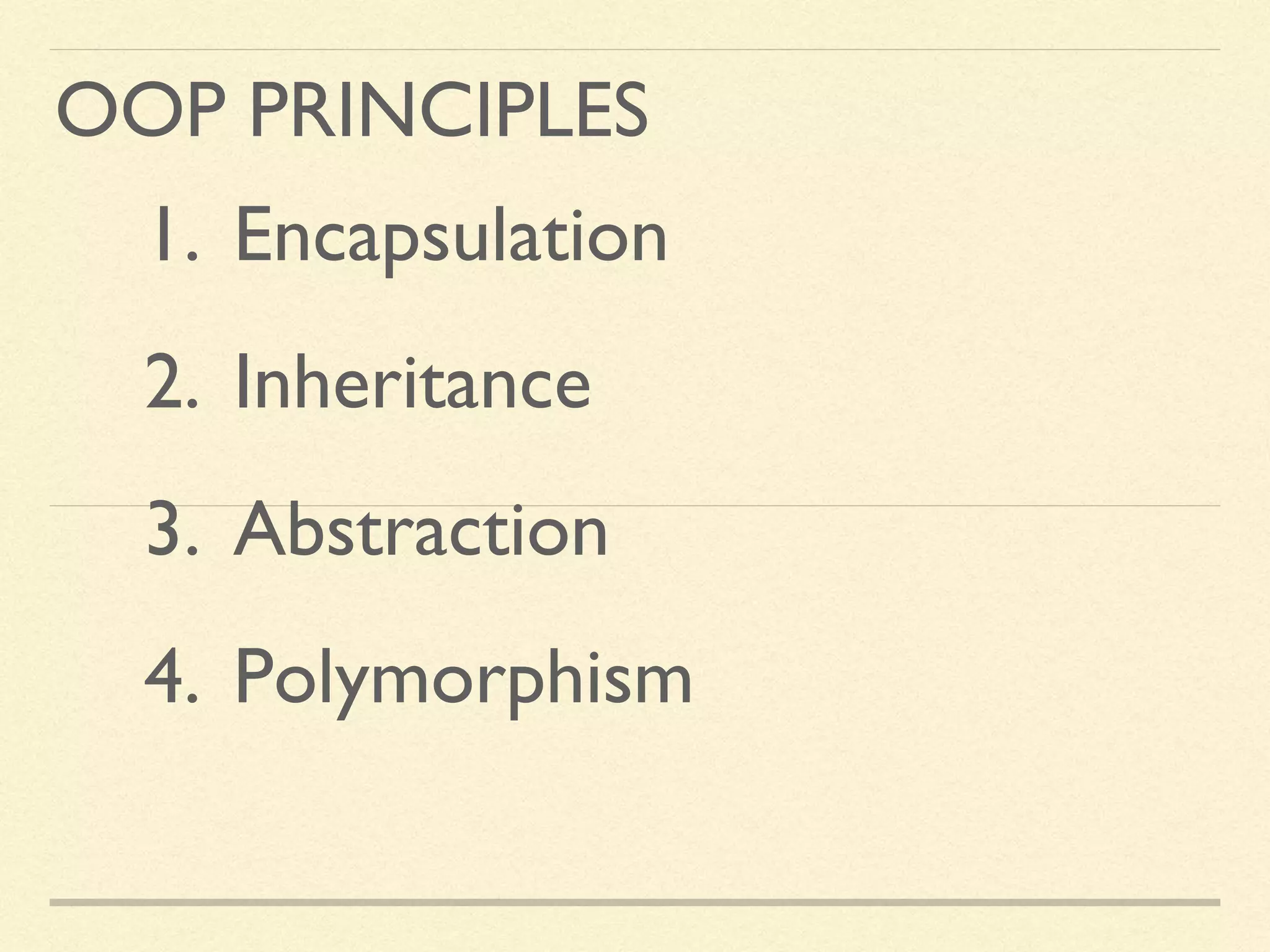
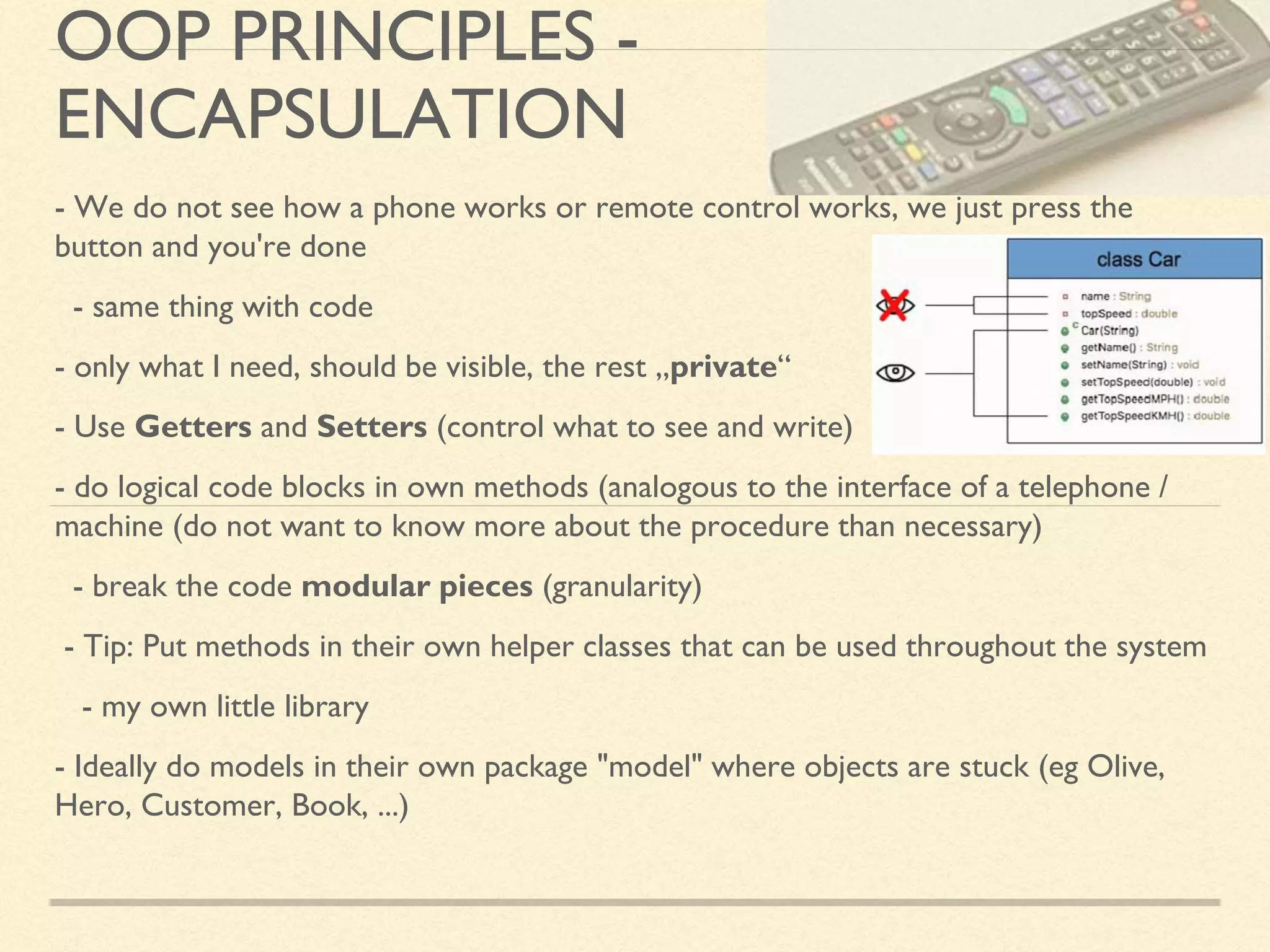
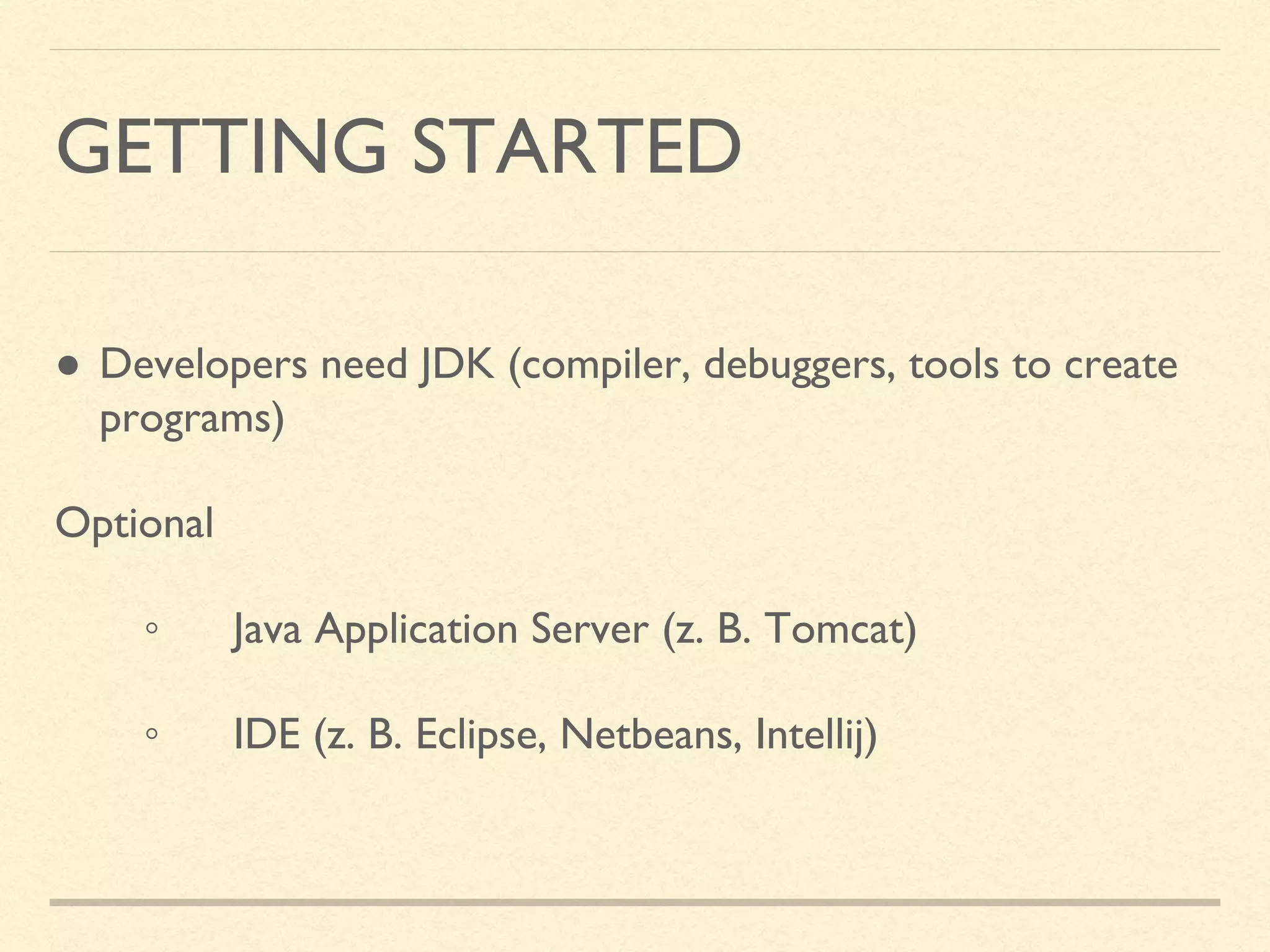
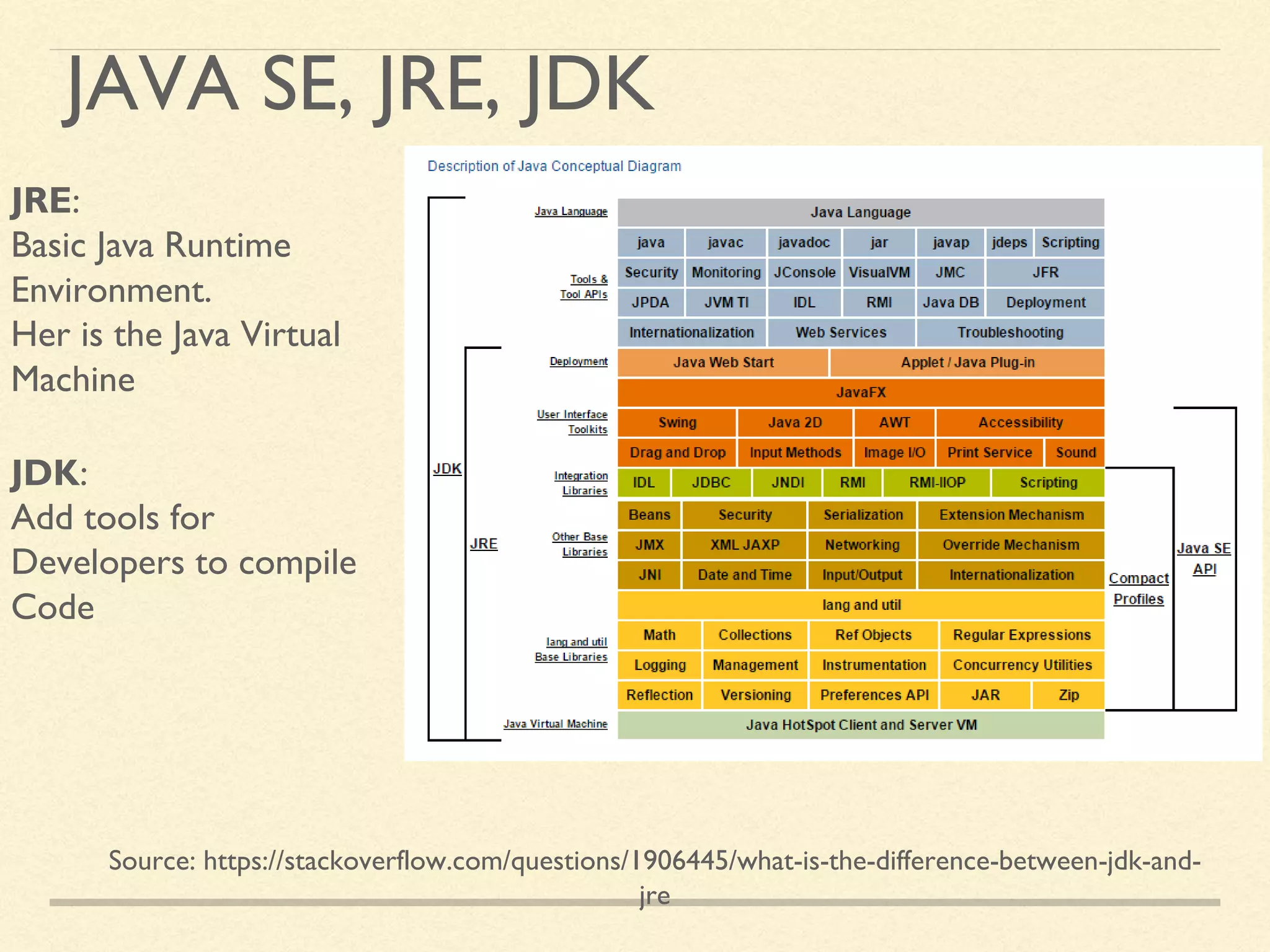
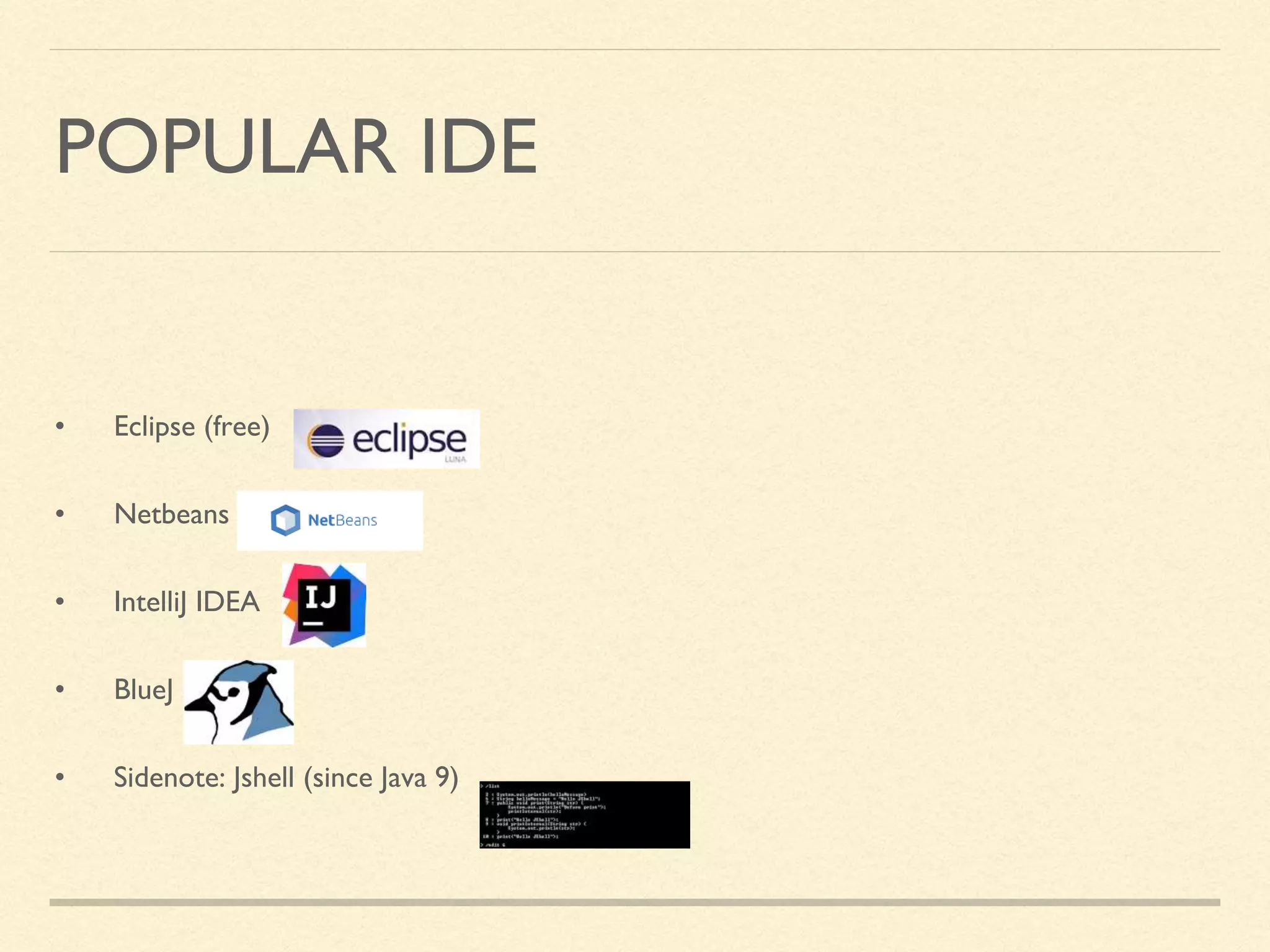
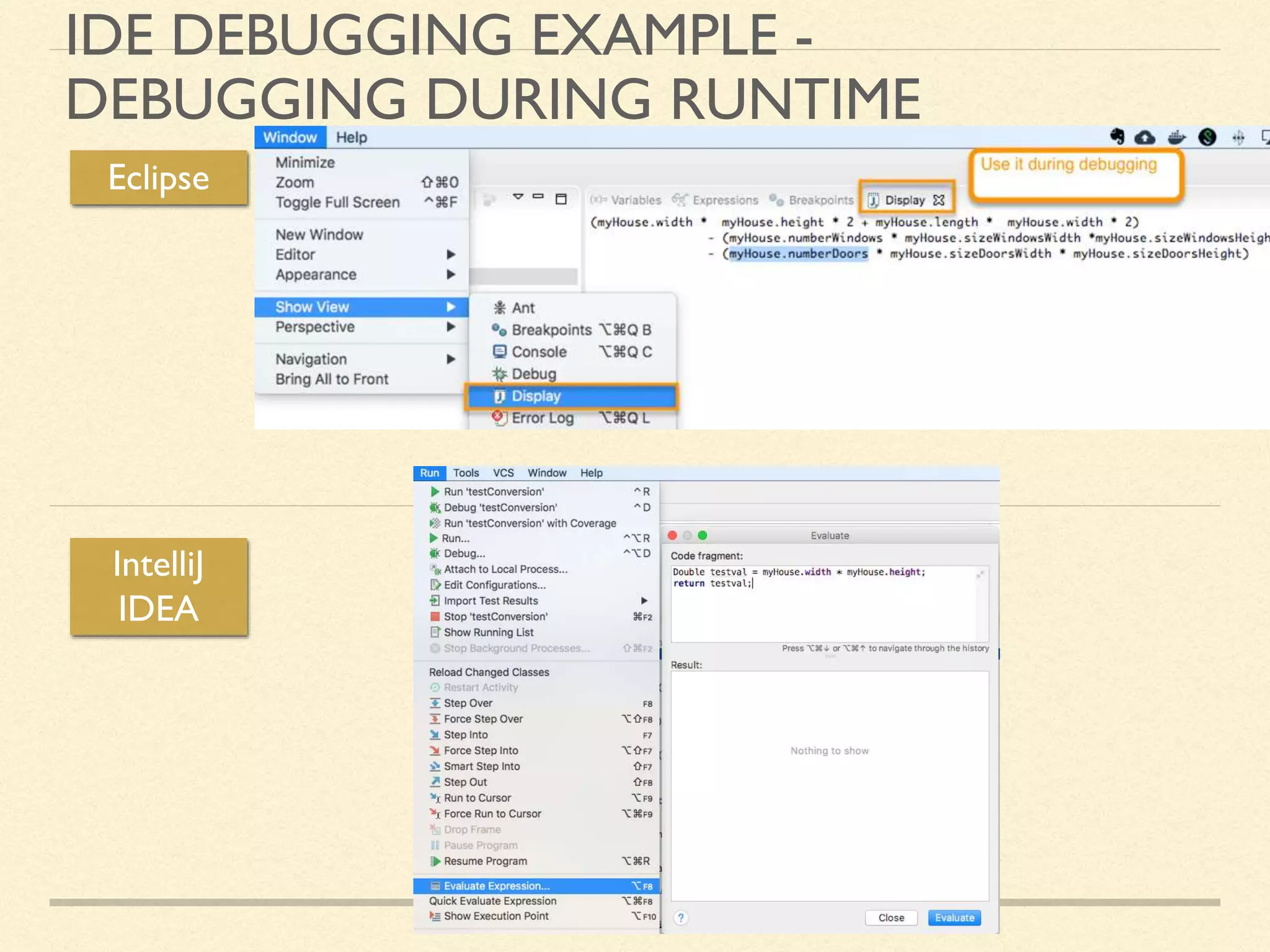
![DEMO (IDE - ECLIPSE)
DEBUGGING - DISPLAY VIEW
Maven
(Build Projekt)
Java Code Display Code
(Debugging Helper)
<project xmlns="http://maven.apache.org/POM/4.0.0"
xmlns:xsi="http://www.w3.org/2001/XMLSchema-instance"
xsi:schemaLocation="http://maven.apache.org/POM/4.0.0
http://maven.apache.org/xsd/maven-4.0.0.xsd">
<modelVersion>4.0.0</modelVersion>
<groupId>com.testmaven</groupId>
<artifactId>birolmaven</artifactId>
<version>0.0.1-SNAPSHOT</version>
<packaging>jar</packaging>
<name>birolmaven</name>
<url>http://maven.apache.org</url>
<properties>
<project.build.sourceEncoding>UTF-
8</project.build.sourceEncoding>
</properties>
<dependencies>
<dependency>
<groupId>junit</groupId>
<artifactId>junit</artifactId>
<version>3.8.1</version>
<scope>test</scope>
</dependency>
</dependencies>
</project>
package com.testlynda.birolexamples;
import java.util.Scanner;
public class testConversion {
public static void main(String[] args) {
/* Challenge: Paint a house */
House myHouse = new House();
// Ask the user for the house
length, the width and the height.
Scanner scan = new
Scanner(system.in);
System.out.println("house
length:");
myHouse.length =
Double.parseDouble(scan.nextLine());
System.out.println("house width:");
myHouse.width =
Double.parseDouble(scan.nextLine());
System.out.println("house
height:");
myHouse.height =
Double.parseDouble(scan.nextLine());
// Ask for the number and size of
the windows.
System.out.println("Number of the
windows:");
myHouse.numberWindows =
Integer.parseInt(scan.nextLine());
System.out.println("Width of the
(myHouse.width * myHouse.height * 2 + myHouse.length *
myHouse.width * 2)
-
(myHouse.numberWindows * myHouse.sizeWindowsWidth
*myHouse.sizeWindowsHeight)
-
(myHouse.numberDoors * myHouse.sizeDoorsWidth *
myHouse.sizeDoorsHeight)](https://image.slidesharecdn.com/java2-181101101014/75/Java-A-broad-introduction-11-2048.jpg)
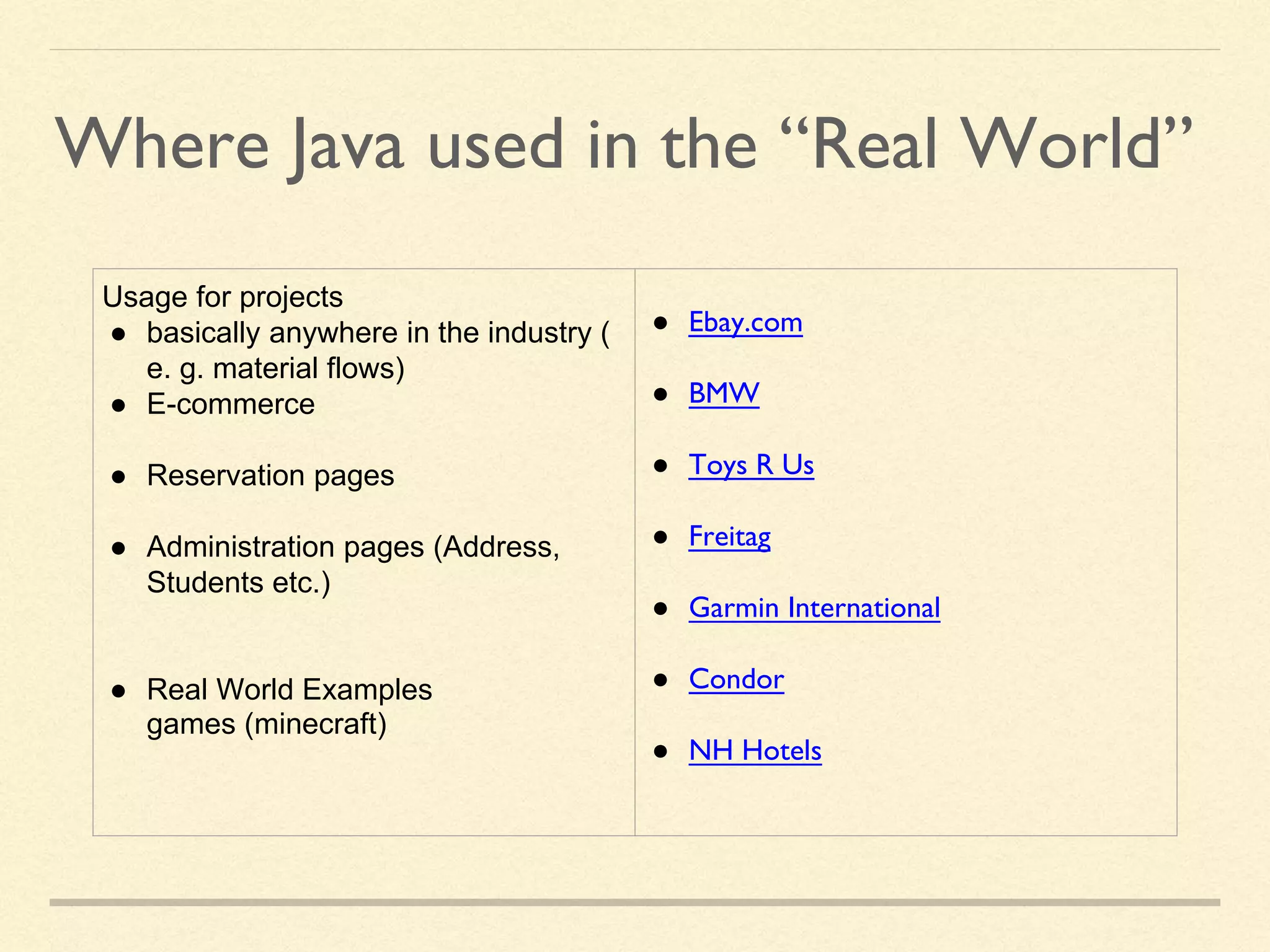
![OOP - ENCASULATION
SIMPLE EXAMPLE
package OOP;
public class ErsteKlasse {
public static void main(String[]
args) {
Konto meinKonto = new
Konto();
meinKonto.einzahlen(33.11);
System.out.println(meinKonto.getKo
ntostand());
}
}
class Konto {
String besitzer;
private double kontostand;
void einzahlen(double betrag) {
this.kontostand += betrag;
}
void abheben( double betrag ) {
this.kontostand -= betrag;
}
double getKontostand() {
return this.kontostand;
}
}](https://image.slidesharecdn.com/java2-181101101014/75/Java-A-broad-introduction-13-2048.jpg)
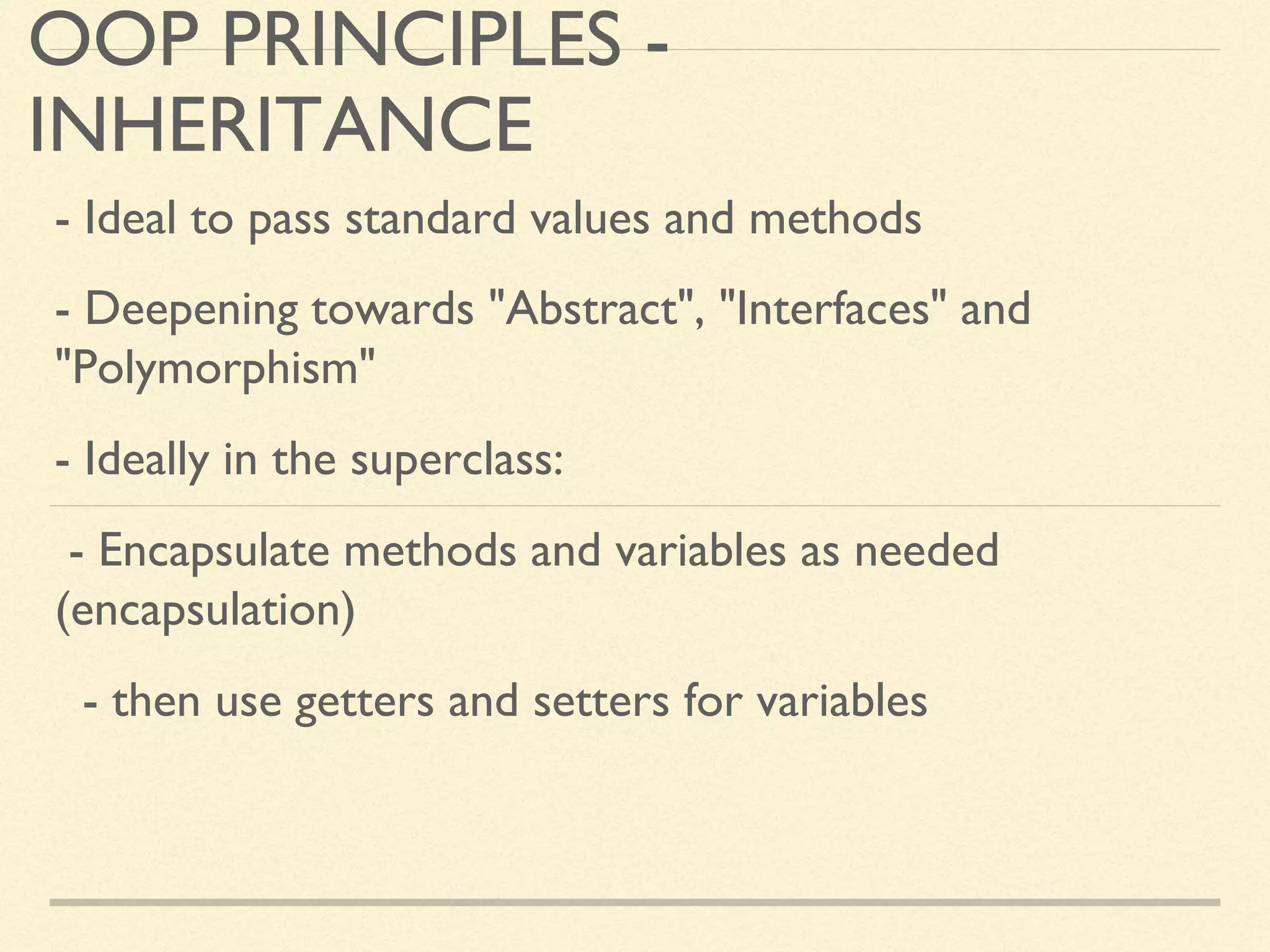
![OOP - ENCASULATION
SIMPLE EXAMPLE
package OOP;
public class ErsteKlasse {
public static void main(String[] args) {
Konto meinKonto = new Konto();
meinKonto.einzahlen(33.11);
System.out.println(meinKonto.getKontostand());
}
}
class Konto {
String besitzer;
double kontostand;
void einzahlen(double betrag) {
this.kontostand += betrag;
}
void abheben( double betrag ) {
this.kontostand -= betrag;
}
double getKontostand() {
return this.kontostand;
}
}](https://image.slidesharecdn.com/java2-181101101014/75/Java-A-broad-introduction-15-2048.jpg)
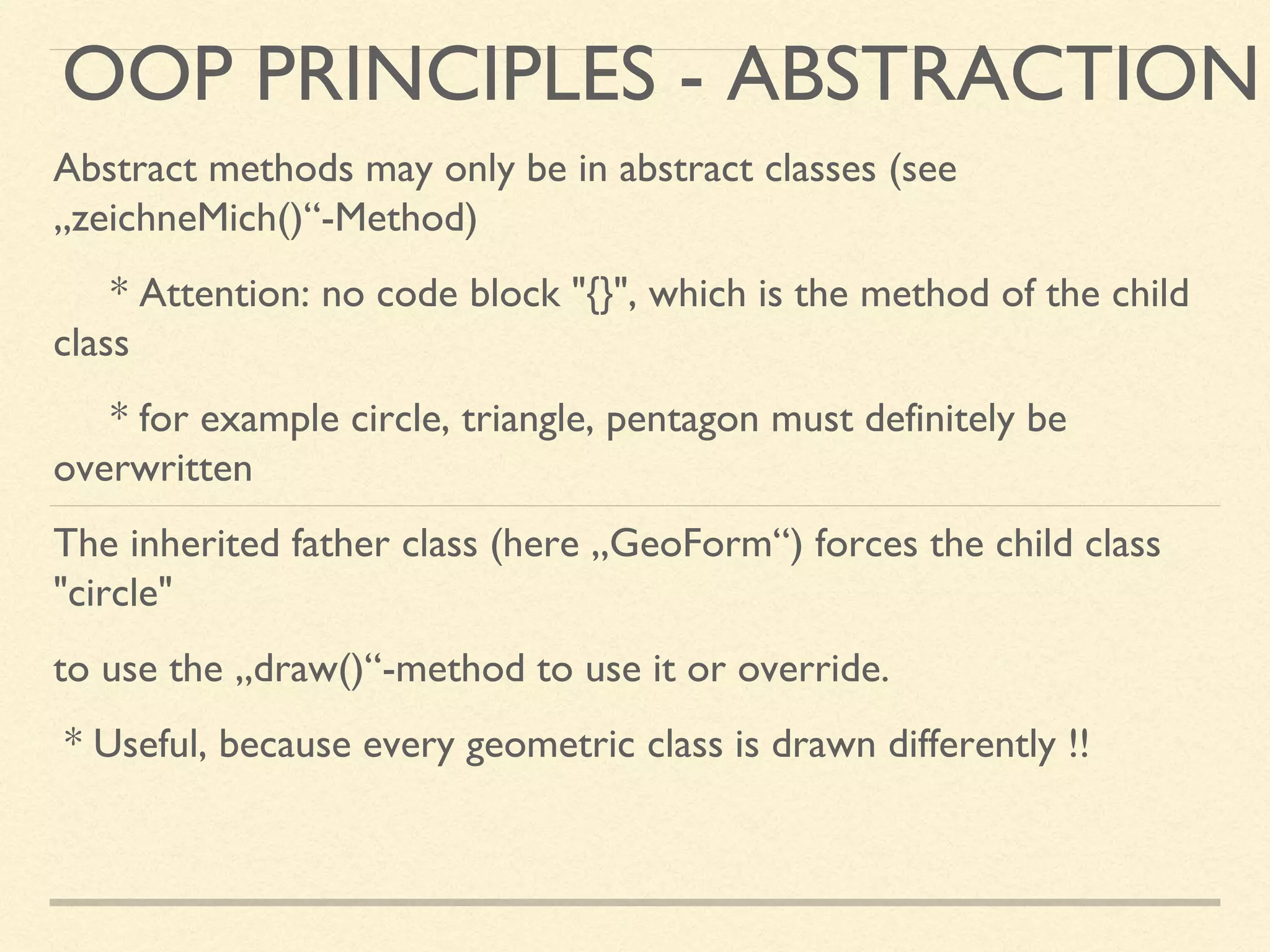
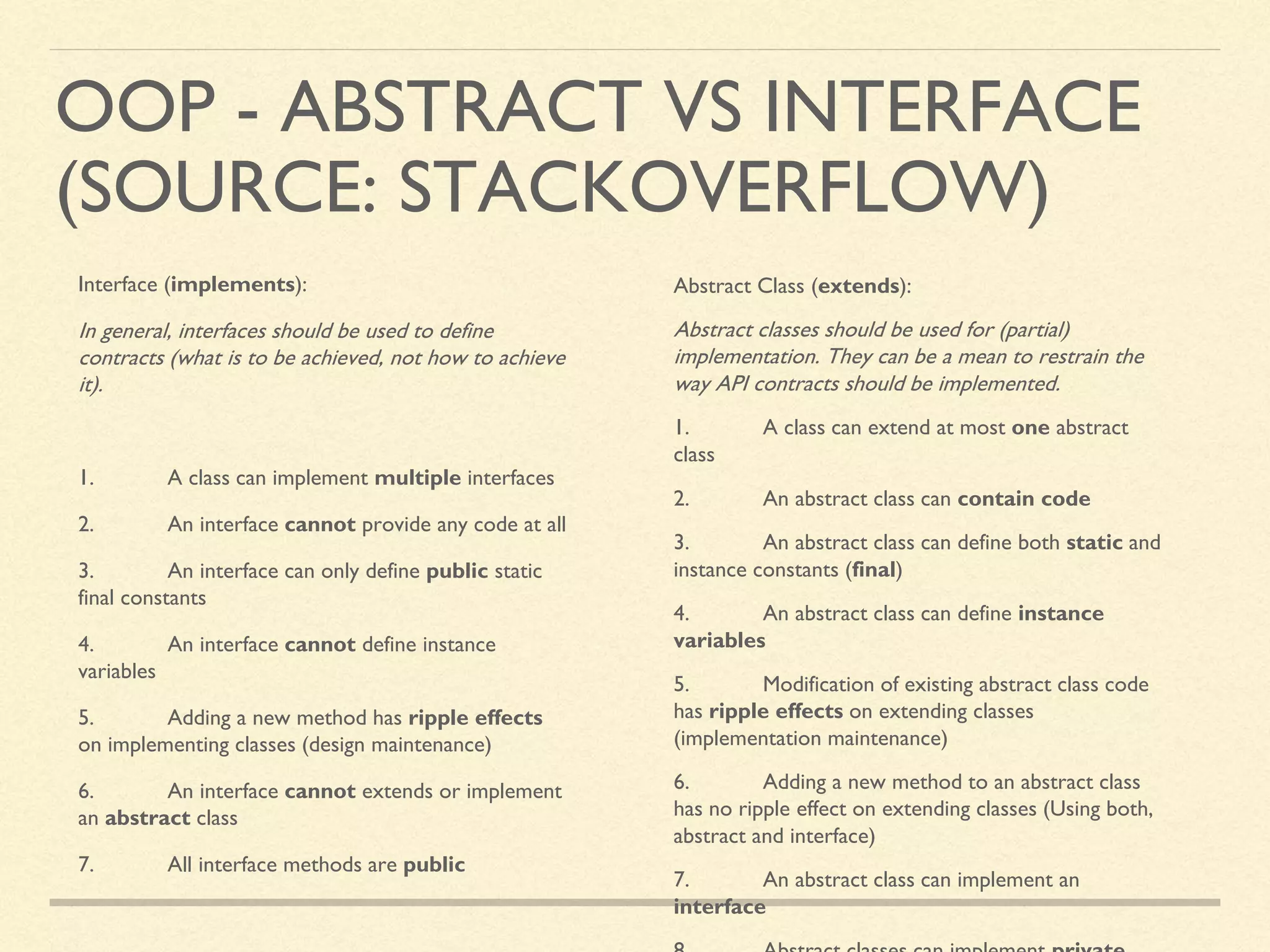
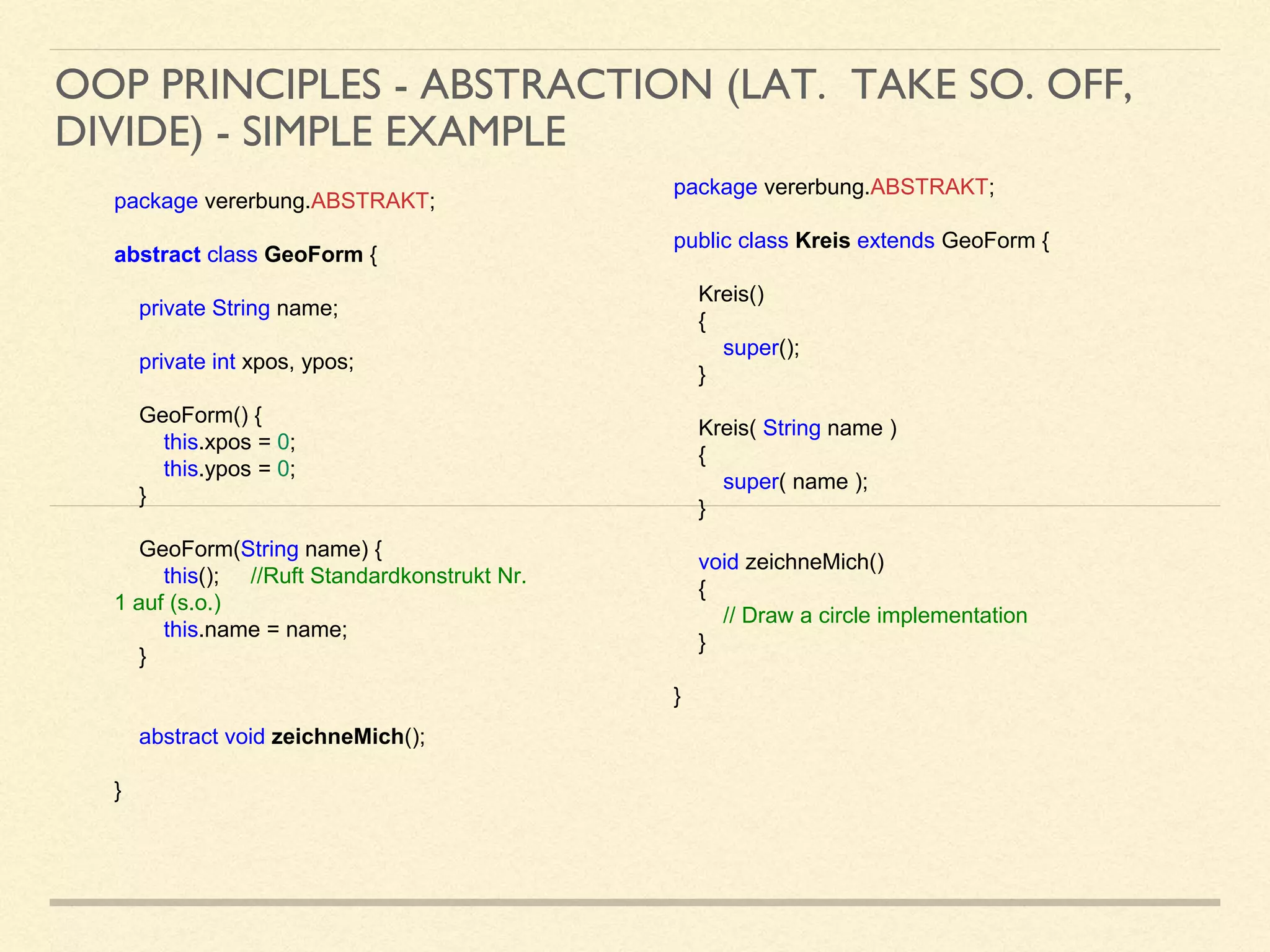
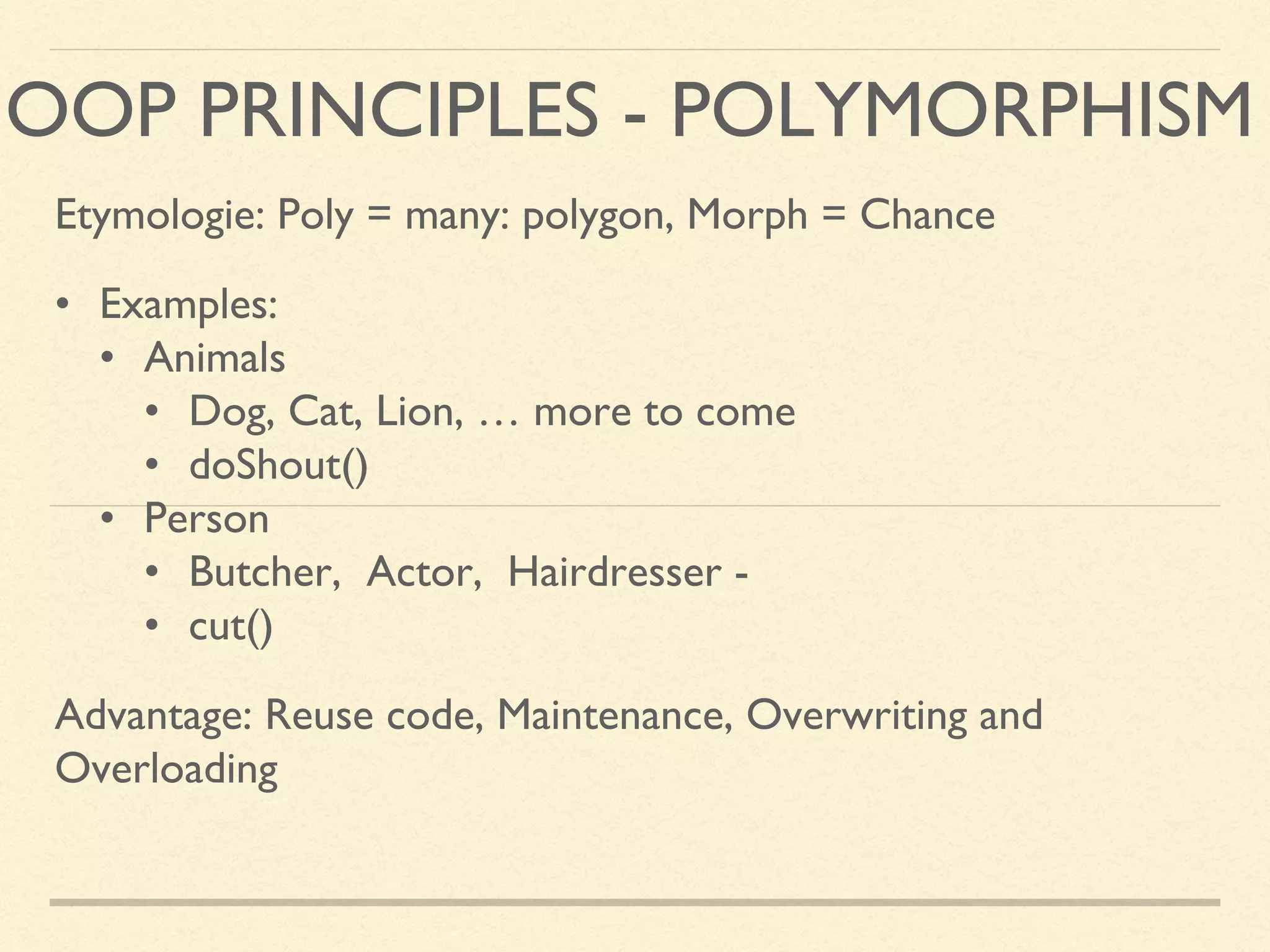
![OOP - POLYMORPHISM - SIMPLE EXAMPLE
package polymorphism.beispiel4;
import java.util.Vector;
abstract class Figur
{
abstract double getFlaeche();
}
class Rechteck extends Figur
{
private double a, b;
public Rechteck( double a, double b )
{
this.a = a;
this.b = b;
}
public double getFlaeche()
{
return a * b;
}
}
class Kreis extends Figur
{
private double r;
public Kreis( double r )
{
this.r = r;
}
public double getFlaeche()
{
return Math.PI * r * r;
}
}
package polymorphism.beispiel4;
import java.util.Vector;
public class Polymorphie
{
public static void main( String[] args )
{
double flaeche = 0;
// Instanziiere Figur-Objekte
Rechteck re1 = new Rechteck( 3, 4 );
Figur re2 = new Rechteck( 5, 6 );
Kreis kr1 = new Kreis( 7 );
Figur kr2 = new Kreis( 8 );
Vector vec = new Vector();
// Fuege beliebig viele beliebige Figuren hinzu
vec.add( re1 );
vec.add( re2 );
vec.add( kr1 );
vec.add( kr2 );
// Berechne die Summe der Flaechen aller Figuren:
for( int i=0; i< vec.size(); i++ )
{
Figur f = (Figur)(vec.get( i ));
flaeche += f.getFlaeche();
}
System.out.println( "Gesamtflaeche ist: " + flaeche );
}
}](https://image.slidesharecdn.com/java2-181101101014/75/Java-A-broad-introduction-20-2048.jpg)
